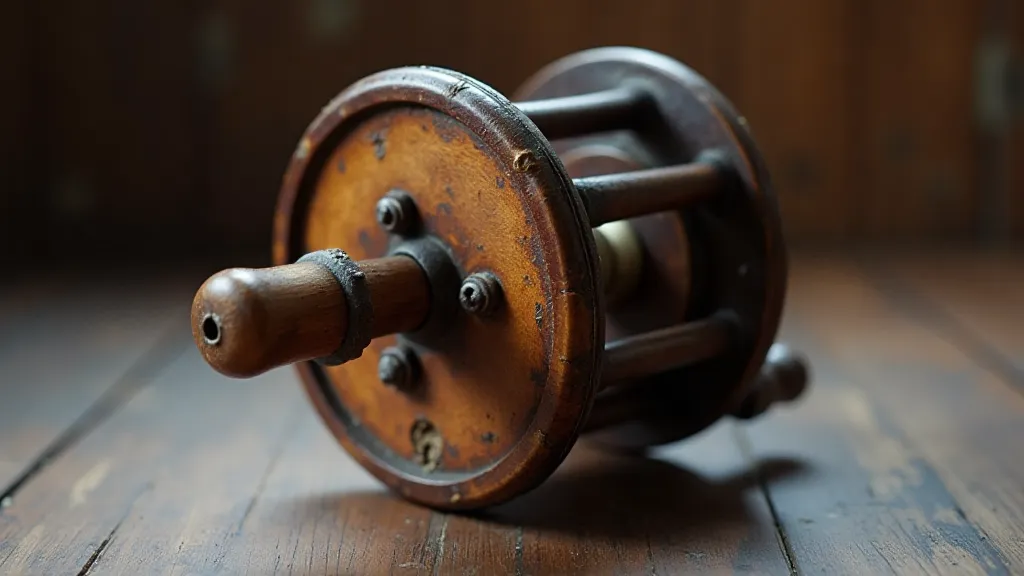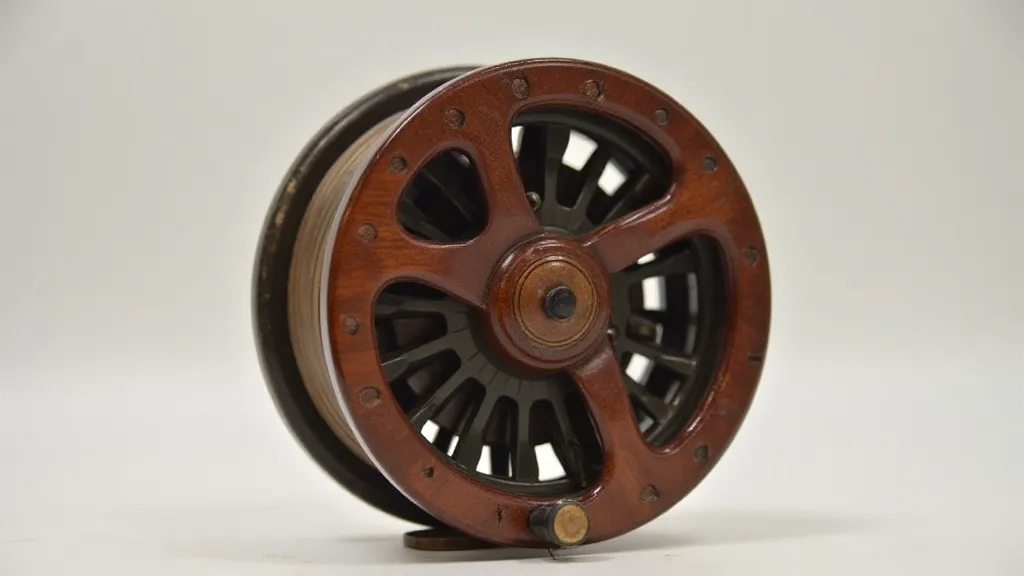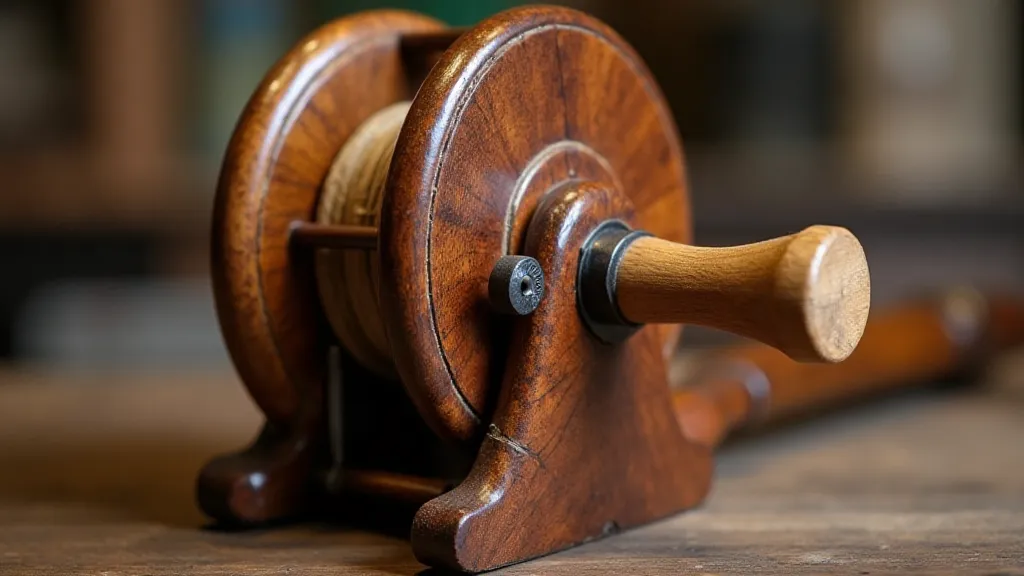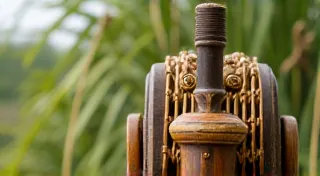The Rise of Bamboo Reels: Beauty and Performance
For the discerning angler and the passionate collector, few items hold the allure of vintage fishing reels. Among these, bamboo reels occupy a special place, revered for their exquisite craftsmanship, timeless beauty, and remarkable fishing performance. This article will delve into the history, construction, characteristics, and appeal of these iconic pieces of fishing gear, offering insights for both seasoned reel collectors and those just beginning their journey into the fascinating world of vintage fishing reels.
The Genesis of Bamboo Reel Craftsmanship
The story of bamboo reels is inextricably linked to the rise of recreational fly fishing in the 19th century. Early fishing was a necessity for survival, but the Victorian era saw the emergence of leisure activities, including fly fishing, which quickly became a symbol of refinement and gentility. The demand for specialized equipment grew rapidly, prompting skilled artisans to craft increasingly sophisticated reels. Bamboo, specifically tonkin cane, a species harvested primarily from China and later Southeast Asia, proved to be the ideal material.
Why bamboo? Unlike metal, bamboo offered an unparalleled strength-to-weight ratio. A well-crafted bamboo reel felt incredibly light and balanced in the hand, a critical factor for precise casting and comfortable fishing. The natural grain and inherent beauty of the bamboo also lent themselves to stunning aesthetics, allowing craftsmen to create works of art that were as pleasing to the eye as they were effective in use. Early manufacturers, based primarily in England and the United States, quickly realized the potential of this remarkable material.
Initially, reels were often crafted by individual workshops, with a strong emphasis on hand-carving and meticulous attention to detail. Names like Thomas Williamson (Hardy), J.L. Grimshaw, and Orvis became synonymous with quality and innovation, laying the foundation for the modern reel manufacturing industry.

Construction and Characteristics of Bamboo Reels
The construction of a bamboo reel is a testament to the skill and dedication of the craftsman. The process begins with the selection and seasoning of tonkin cane. This crucial step, which can take several years, removes moisture and stabilizes the bamboo, preventing warping and cracking. The cane is then split into segments, each carefully shaped and fitted together to form the reel frame and drum. Traditionally, bamboo reels were secured with intricate patterns of wrapping, often made from silk or linen thread, painstakingly applied and varnished to provide durability and enhance the aesthetic appeal.
Several key characteristics distinguish bamboo reels from their metal counterparts:
- Weight and Balance: Bamboo reels are remarkably light and well-balanced, allowing for comfortable casting and improved sensitivity.
- Aesthetics: The natural beauty of the bamboo grain creates a visually appealing and unique appearance.
- Sensitivity: The light and flexible nature of bamboo allows anglers to feel subtle strikes and nuances in the water.
- Durability: While seemingly delicate, well-made bamboo reels are surprisingly durable and can withstand years of use with proper care. However, they are more susceptible to damage from impact and environmental factors compared to metal reels.
- Sound: The distinctive clicking sound of a bamboo reel as line is retrieved is a cherished characteristic for many anglers.
The design of bamboo reels also varied considerably. Early reels were often simple in construction, with a focus on functionality. As the art of reel making evolved, manufacturers experimented with more elaborate designs, incorporating features such as adjustable drag systems, innovative line guards, and intricate engravings.
Key Manufacturers and Notable Models
Several manufacturers stand out in the history of bamboo reel production. Their names are often synonymous with quality and innovation:
- Hardy: Perhaps the most famous name in bamboo reels, Hardy of Alnwick, England, produced some of the most sought-after reels ever made. Models like the "Perfect" and "Lightweight" are highly prized by collectors.
- Orvis: The Orvis Company, based in Vermont, pioneered the use of bamboo reels in the United States. Their early reels are prized for their elegant designs and smooth operation.
- J.L. Grimshaw: Grimshaw reels, primarily manufactured in Yorkshire, England, are renowned for their superb craftsmanship and robust construction.
- Phillipson: Another prominent English manufacturer, Phillipson reels are known for their innovative designs and durable construction.
- Hill: Hill reels, particularly those made during the early 20th century, are considered to be exceptional examples of American craftsmanship.
The value of these reels varies greatly, influenced by factors such as manufacturer, model, condition, originality, and rarity. Scarcer models, those in exceptional condition, and those with unique features command the highest prices. The "Holy Grail" for many reel collectors is a pristine example of a Hardy "J.L. Wright" reel, a model produced in limited numbers during the early 1900s.

Collecting and Caring for Vintage Bamboo Reels
Collecting vintage bamboo reels can be a deeply rewarding hobby. However, it requires a degree of knowledge and patience. Start by researching different manufacturers and models. Learn to identify authentic reels and to spot signs of damage or restoration. Joining online forums and connecting with experienced collectors can provide invaluable insights.
Caring for vintage bamboo reels is crucial for preserving their value and ensuring their longevity. Here are a few essential tips:
- Avoid Exposure to Moisture: Bamboo is susceptible to damage from moisture. Always dry reels thoroughly after use.
- Store Properly: Store reels in a dry, stable environment, away from direct sunlight and extreme temperatures.
- Handle with Care: Bamboo is relatively fragile. Avoid dropping or subjecting reels to impacts.
- Clean Regularly: Gently clean reels with a soft cloth to remove dirt and grime.
- Consider Professional Restoration: If a reel requires significant repair or restoration, seek the expertise of a qualified professional.
The Enduring Appeal of Bamboo Reels
Despite the advent of modern materials and manufacturing techniques, vintage bamboo reels retain a unique and enduring appeal. They represent a bygone era of craftsmanship, elegance, and a deep connection to the natural world. The beauty of the bamboo grain, the smooth operation, the distinctive sound, and the tangible link to the history of fly fishing – all contribute to the allure of these remarkable artifacts. For the collector and the angler alike, a vintage bamboo reel is more than just a piece of fishing gear; it’s a work of art, a piece of history, and a testament to the enduring power of human ingenuity and artistry.






